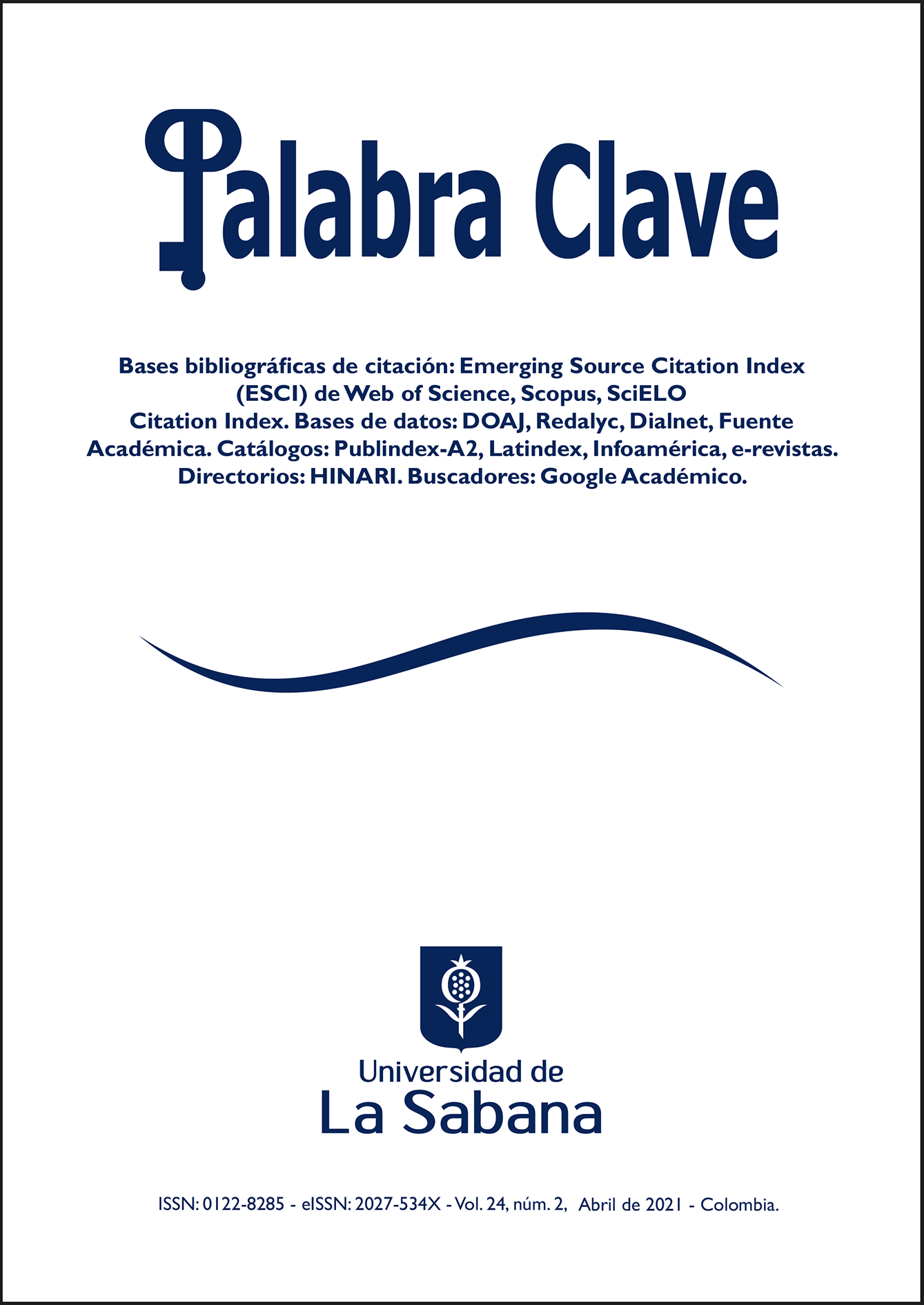Screenwriting: Between Art and Craft
DOI:
https://doi.org/10.5294/pacla.2021.24.2.5Keywords:
Teaching, freedom of expression, rules, vocational training, academic teaching, academic art teaching, narration, film makers, filmmaking, romanticism, film studiesAbstract
This paper discusses the teaching of screenwriting and storytelling in terms of art and craft. It argues that since Romanticism established itself in the 19th century as the dominant Western view on art and culture, it has driven a wedge between people’s notions of art and craft, promoting the former and demoting the latter. This rift has impeded the teaching of screenwriting and storytelling in general. Following this, art historians and sociologists of art have suggested developing a “third system of art,” one that reintegrates the artist and the artisan, the art and craft-based values. This essay develops the basic tenets of a “technical approach” to the teaching of screenwriting. This technical approach sits in-between a Romantically biased “free-wheeling” approach and a mechanistic, “rule-based” approach. It is argued that a technical approach to screenwriting or storytelling could help materialize such a “third system of art” and benefit the practice, teaching, and study of screenwriting and storytelling.
Downloads
References
Abrams, M. H. (1989). Doing Things with Texts: Essays in Criticism and Critical Theory. W.W. Norton & Company.
Becker, H. S. (1982). Art Worlds. University of California Press.
Becker, H. S. (2008). Art Worlds. 25th Anniversary Edition. Updated and Expanded. University of California Press. https://doi.org/10.1525/9780520934870-005
Bourdieu, P. (1998). Les règles de l’art. Genèse et structure du champ littéraire. Éditions du Seuil.
Cattrysse, P. (2016). Cultural dimensions and an intercultural study of narratorial behavior. The Journal of Internationalization and Localization, 3(2), 113–132. https://doi.org/10.1075/jial.3.2.01cat
Cattrysse, P. (2017). Cultural Dimensions and a Cultural Study of Screenwriting. In Transcultural Screenwriting. Telling Stories for a Global World (pp. 8–27). Cambridge Scholars Publishing.
Cattrysse, P. (2020). Translation and Adaptation Studies: More Interdisciplinary Reflections. TTR: Traduction, Terminologie, Rédaction. https://doi.org/10.7202/1071147ar
Clowney, D. (2008). A Third System of the Arts? An Exploration of Some Ideas from Larry Shiner’s The Invention of Art: A Cultural History. Contemporary Aesthetics, 2(6).
Conradie, W., Frittella, S., Palmigiano, A., Piazzai, M., Tzimoulis, A., & Wijnberg, N. M. (2017). Toward an Epistemic-Logical Theory of Categorization. EPTCS, 251, 167–186. https://doi.org/10.4204/EPTCS.251.12
Goldstone, R. L., Kersten, A., & Carvalho, P. R. (2018). Categorization and Concepts. In Stevens’ Handbook of Experimental Psychology and Cognitive Neuroscience: Vol. Three (pp. 275–317). Wiley. https://doi.org/10.1002/9781119170174.epcn308
Kristeller, P. O. (1951). The Modern System of the Arts: A Study in the History of Aesthetics Part I. Journal of the History of Ideas, 12(4), 496–527. https://doi.org/10.2307/2707484
Lotman, Y. M. (1977). The Structure of the Artistic Text. Translated from the Russian by Gail Lenhoff and Ronald Vroon. University of Michigan, Department of Slavic Languages and Literatures.
Lubart, T. I. (Ed.). (2018). The Creative Process. Perspectives from Multiple Domains. Palgrave Macmillan. https://doi.org/10.1057/978-1-137-50563-7
Mattick, P. (2003). Art in its Time. Theories and Practices of Modern Aesthetics. Routledge Taylor & Francis Group. https://doi.org/10.4324/9780203417836
Minda, J. P. (2015). The Psychology of Thinking. Reasoning, Decision-Making & Problem-Solving. Sage. https://doi.org/10.4135/9781473920262
Moulin, R. (1978). La Genèse de la rareté artistique. Revue d’ethnologie Française, 8, 241–258.
Nisbett, R. E. (2005). The Geography of Thought. How Asians and Westerners Think Differently and Why. Nicholas Brealey Publishing.
Rivera, D. (1932). The revolutionary spirit in modern art. The Modern Quarterly (Baltimore), 6(3), 51–57.
Runco, M. A., & Jaeger, G. J. (2012). The Standard Definition of Creativity. Creativity Research Journal, 24(1), 92–96. https://doi.org/10.1080/10400419.2012.650092
Sawyer, K. (2006). Explaining Creativity: The Science of Human Innovation. Oxford University Press.
Shepard, R. N. (1987). Toward a universal law of generalization for psychological science. Science, 237, 1317–1323. https://doi.org/10.1126/science.3629243
Shiner, L. (2001). The Invention of Art. A Cultural History. University of Chicago Press.
Walia, C. (2019). A Dynamic Definition of Creativity. Creativity Research Journal, 1–11. https://doi.org/10.1080/10400419.2019.1641787
Weiner, R. P. (2000). Creativity & beyond. Cultures, Values, and Change. State University of New York Press.
Published
How to Cite
Issue
Section
License
Copyright (c) 2021 Palabra Clave

This work is licensed under a Creative Commons Attribution-ShareAlike 4.0 International License.
1. Proposed Policy for Journals That Offer Open Access
Authors who publish with this journal agree to the following terms:
- Authors retain copyright and grant the journal right of first publication with the work simultaneously licensed under a Creative Commons Attribution License that allows others to share the work with an acknowledgement of the work's authorship and initial publication in this journal.









